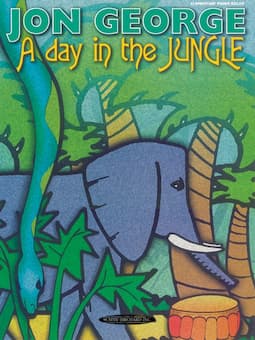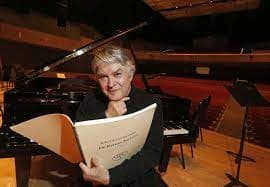
© geocities.ws
The year of the Tiger is coming! Tigers are courageous and competitive. According to the Chinese zodiac, tiger people have strong personalities who like to fight for themselves, but they can also be friendly and generous. How about classical music inspired by tigers? Does the music only demonstrate the aggressiveness of tigers? Tigers have inspired composers in many different ways. In this article, I want to share my favorite seven tiger-inspired pieces.
Henry Cowell: Tiger

Henry Cowell
The first piece I want to share with you is Tiger by Henry Cowell (1897-1965). It was written for solo piano in 1930. Known as a pioneer of experimental music and the ultra-modernist movement, Cowell began to explore new composition techniques as early as the 1910s. His famous work, Banshee, is an experimental work for string piano in which Cowell discovered 12 different ways to play the strings inside the piano.
Tiger is an experimental work demonstrating Cowell’s signature tone clusters and endless rhythms. Inspired by William Blake’s poem, The Tyger, Cowell required the performers to use their elbows to play the tone clusters, as if expressing the ferocity and the ruthlessness of tigers.

Alexina Louie © Bo Huang
Alexina Louie: Bringing the Tiger Down From the Mountain II
Bringing the Tiger Down From the Mountain II was written by a celebrated Canadian composer, Alexina Louie (1949-). As the second generation of Canadians of Chinese descent, Louie often demonstrates the cultural exchanges between the East and the West. This work, written in 1991 for cello and piano, is inspired by the tai-chi movements. The music alternates between passionate and meditative passages, showing the yin-yang ideas in Chinese philosophy. In 2004, this work was rearranged for cello and orchestra.

Havergal Brian
Havergal Brian: The Tigers
This piece takes a very different perspective of tigers. Composed by British composer Havergal Brian (1917-1929), The Tigers was originally titled The Grotesques. It was initially composed for burlesque opera (1917-1919) and later orchestrated six symphonic movements (1927-29). Instead of drawing directly from the characteristic of tigers, The Tigers is written as a satire on the under preparation of the British army in training on the home front. The title is depicted from the nickname of Royal Leicestershire Regiment, in which Brian wrote a mock battle between the Tigers and the Hornets in Act II.

Jon George: A Day in the Jungle
© Alfred Music
Jon George: A Day in the Jungle: Tiger Stalking
A Day in the Jungle: Tiger Stalking is a fun piano piece for beginners to learn. Composed by a pedagogue Jon George, this piece employs fluctuating dynamics, articulations, accents, and a tone cluster in the end to portray a vivid image of a tiger hunting for food. In addition to Tiger Stalking, A Day in the Jungle includes eleven pieces describing the jungle’s different activities, such as Elephant Walking, Snake Sneaking, and Natives Dancing.
Andrew Staniland: Talking Down the Tiger

Andrew Staniland
Andrew Staniland (1977-) is another important and innovative Canadian composer whose works have been performed and broadcasted widely around the globe. His composition often demonstrates his interest in new music, including Talking Down the Tiger (2010). Commissioned by percussionist Ryan Scott, this piece is a percussion piece with live electronics. The energetic percussion part plays as the metaphor of the tiger. Through one continuous movement with two large sections marked “Crazy!” and “Beautiful,” the composer brings us on a journey from wildness and ferociousness to a mystical and beautiful world. The live electronics create a spacious looping pattern over multiple speakers.
Robert Xavier Rodríguez: Mascaras – VI. El tigre (The Tiger): Deciso brillante
Robert Xavier Rodríguez: Mascaras (version for cello and piano) – VI. El tigre (The Tiger): Deciso brillante (Jesus Castro-Balbi, cello; Gloria Lin, piano)

Robert Xavier Rodríguez
Renowned American composer Robert Xavier Rodríguez (1946-) has received many international composition awards throughout his career. A student of Nadia Boulanger, Jacob Druckman, Bruno Maderna, and Elliott Carter, his composition includes almost all genres, and he is particularly famous for his operas and music for children.
Máscaras (1993) was initially composed for cello and orchestra and rearranged for cello and piano in 2010. This piece is based on the decorated masks used in traditional ceremonies and dances in Mexico. Rodríguez adapted some Mexican folk melodies and elements into this work. El Tigre is the last movement of this six-movement work. It is a festive toccata with many brilliant and wild cello passages.
Du Yun: When a Tiger Meets a Rosa Rugosa
Du Yun: When a Tiger Meets a Rosa Rugosa (Hilary Hahn, violin; Cory Smythe, piano)

Du Yun © Xiao Nan
The winner of the Pulitzer Prize for the music of her second opera, Angel Bone, Du Yun is a composer, multi-instrumentalist, performance artist, activist, and curator for new music. Her work explores the combination of new music and sound media in traditional genres. When a Tiger Meets a Rosa Rugosa, written for violin and piano, was commissioned by Hilary Hahn in 2010. According to Yun’s program note, this work was inspired by Yu Guangzhong’s translation of Siegfried Sasson’s In me the tiger sniffs the rose and a letter by Proust. This work not only displays the strong image of a tiger but also the delicate, effeminate, sensitive part of him (of the tiger?).
There are many more Tiger-inspired works, and they all display the image of tigers in various ways. As the year of the tiger is approaching, I want to wish all our Interlude readers a lucky and mighty year of the tiger!
For more of the best in classical music, sign up to our E-Newsletter

